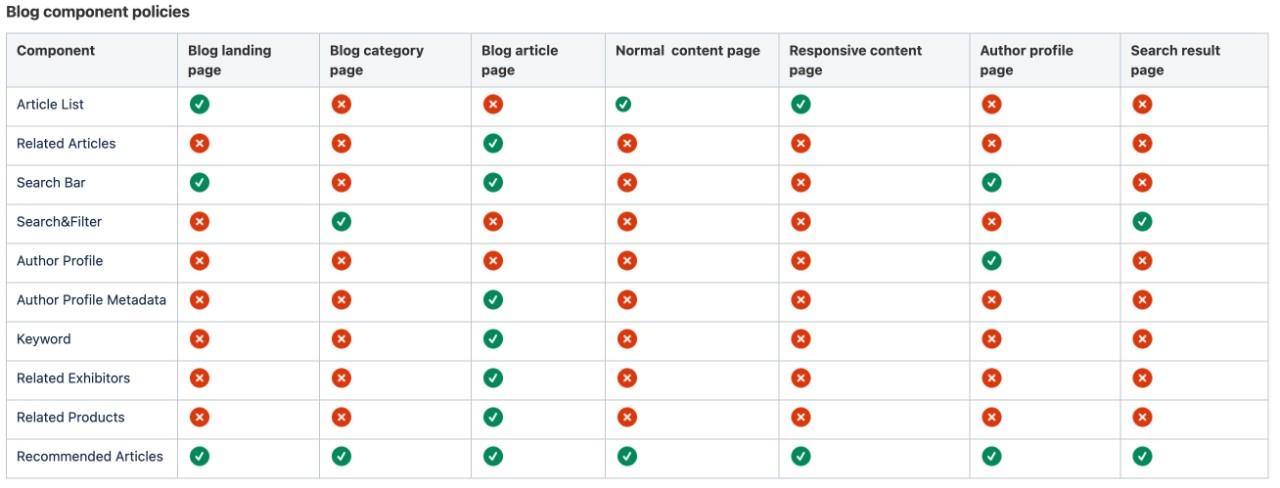How we built a blog platform with AEM

Blog platforms are ubiquitous today as a crucial part of many organizations’ marketing strategies. Since blogs house a variety of original and sponsored content over time and help to build your brand equity, it’s important to structure them in a way that is aligned with your business goals. Luckily, there are tools like Adobe Experience Manager (AEM) that can help you build, integrate, and maintain your blog platform with efficiency and ease.
What functionalities do we need in a blog platform?
Blog platforms should offer hosts the ability to publish and edit articles, as well as placing ads on the platform. General users should also be able to navigate the blog, search its content, view author profiles and information, comment on and share articles to social media, and sign up for a newsletter to receive regular updates.
Why build a blog platform?
Blog platforms can provide your business with valuable revenue generation opportunities that tend to compound over time. Some of the main benefits include:
- Gated content: Content that is accessible only to paid subscribers.
- Lead generation: Content that is accessible once visitors have entered their contact information, generating leads for your business.
- Sponsored content: Banner ads or sponsored articles that are paid for by an advertiser.
- Traffic generation: Utilizing blogs to lead users to another page or call to action.
Before building a blog platform, there are some key decisions to consider:
- Should the blog platform be an independent platform, or part of the main site structure?
In our case, we made the blog platform part of the main site structure. When we use AEM to build components for an existing website, we can then use these components to build the blog platform, without building new components from scratch.
- Should the blog structure templates use a responsive grid or rigid column control?
We recommend using a responsive grid, which is a built-in feature of AEM and offers greater flexibility and ease of management when it comes to updating content.
- Should the search function be available across the entire site, or limited to the contents of the blog?
We decided to limit the search function to the blog content, as the technical effort of building a search function across the entire site would be greater than the payoff.
How to build a blog platform in AEM
We started by mapping out the user journey through the blog as the foundation to guide the rest of the development process. Development occurred in 3 phases: we started by building the key MVP components and templates, then secondary functionalities (e.g. subscription, registration, ability to download articles as a PDF), and finally development of the enhancement features (e.g. social sharing, commenting, integrating third-party apps).
Blog Structure: Next, we set up the blog structure template. In our case, since the blog was part of the main site structure, we started by creating the blog landing page – essentially the blog homepage – where the user lands when they navigate to the blog. Then, we created subpages to show all articles, search results, author profiles, and articles belonging to the same category. We created predefined blueprints for these pages so editors could use the same templates for consistency across the blog. But further along in the development process, we would add editable templates so that blog editors could change these templates.
Blog Components: Using AEM, we were able to use standard blog components like article lists, search and filter, as well as author metadata across the platform to keep content neatly organized and easily accessible. For example, storing author information in content fragments enables third-party apps to extract the data for better discoverability.
Policies: We used policy tables like the one below to specify features and functionalities for different templates and components of the blog to our requirements engineers.

Challenges we encountered
While a blog platform may seem simple and intuitive enough, the process of building one poses its share of challenges, both technical and non-technical. Creating a unified solution to meet the needs of different stakeholders is no easy feat, to begin with. We also experienced challenges due to rotating staff, which impacted the consistency and velocity of our work, as well as roadmap changes and shifting priorities that required us to stop and pivot our focus at various points (for example, to prioritize microservice tickets).
In terms of technical challenges, the client was using a third-party global taxonomy system called PPS, which proved challenging to integrate amongst other eCommerce and microservices on the back end. On the front end, the chosen Algolia search software only allowed manual filtering, so we engineered this manually to allow multilevel facet filtering, to filter by categories and subcategories together. Due to these additional engineering efforts, we had to conduct QA testing without the PPS integration being fully implemented. However, we did successfully overcome these challenges and create a robust blog platform with AEM.
Key Takeaways
All in all, building your blog platform with AEM is a great way to streamline development and maintenance efforts with the use of standardized components and a responsive grid. Since blogs provide so much potential for business and revenue growth that accumulates over time, it’s worth investing the time upfront to integrate the build into the rest of your website, and set them up in a way that enables the blog team to manage it efficiently down the road.
Contact Netcentric today to learn how we can help your business leverage AEM to build a blog platform that works for you.